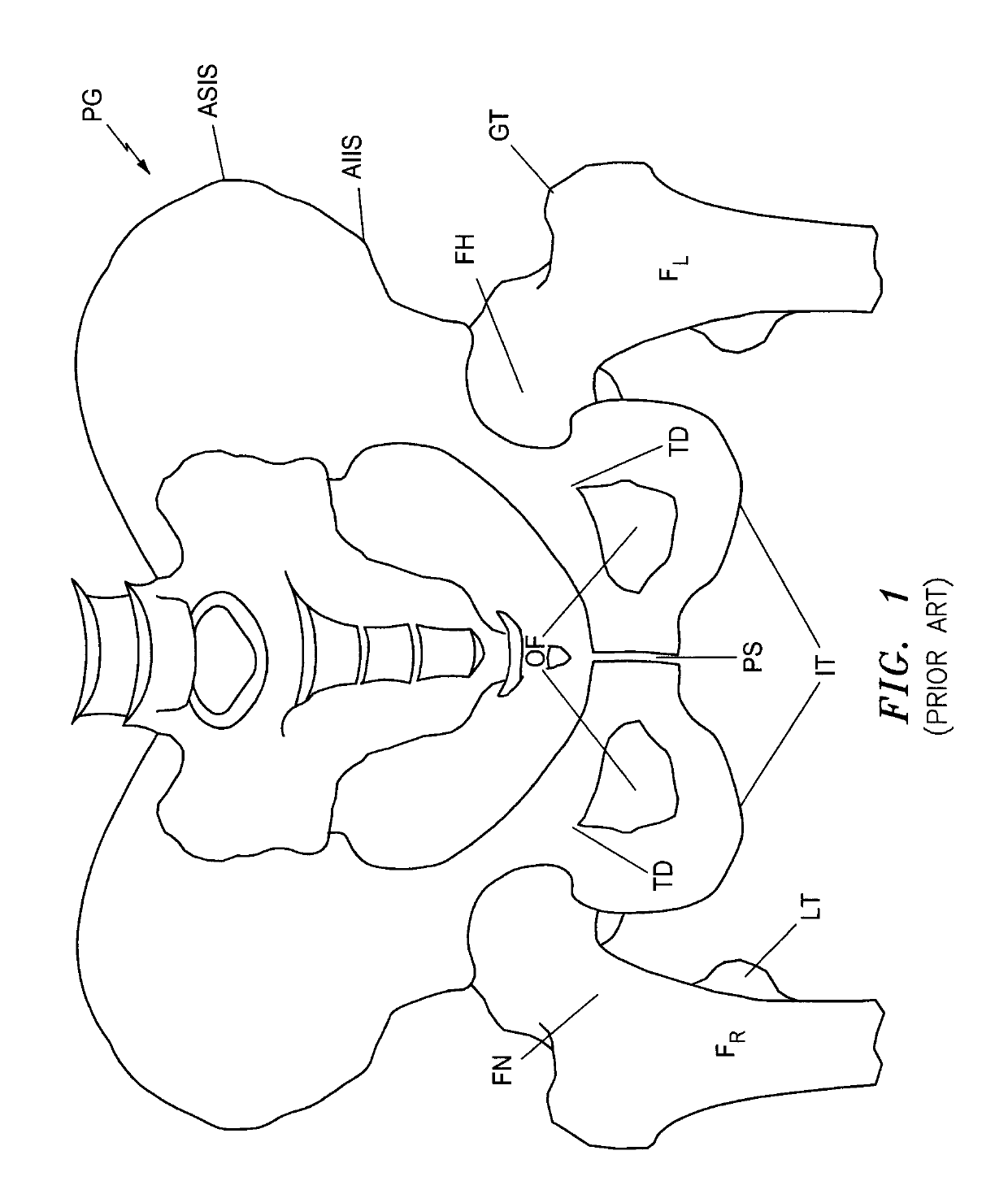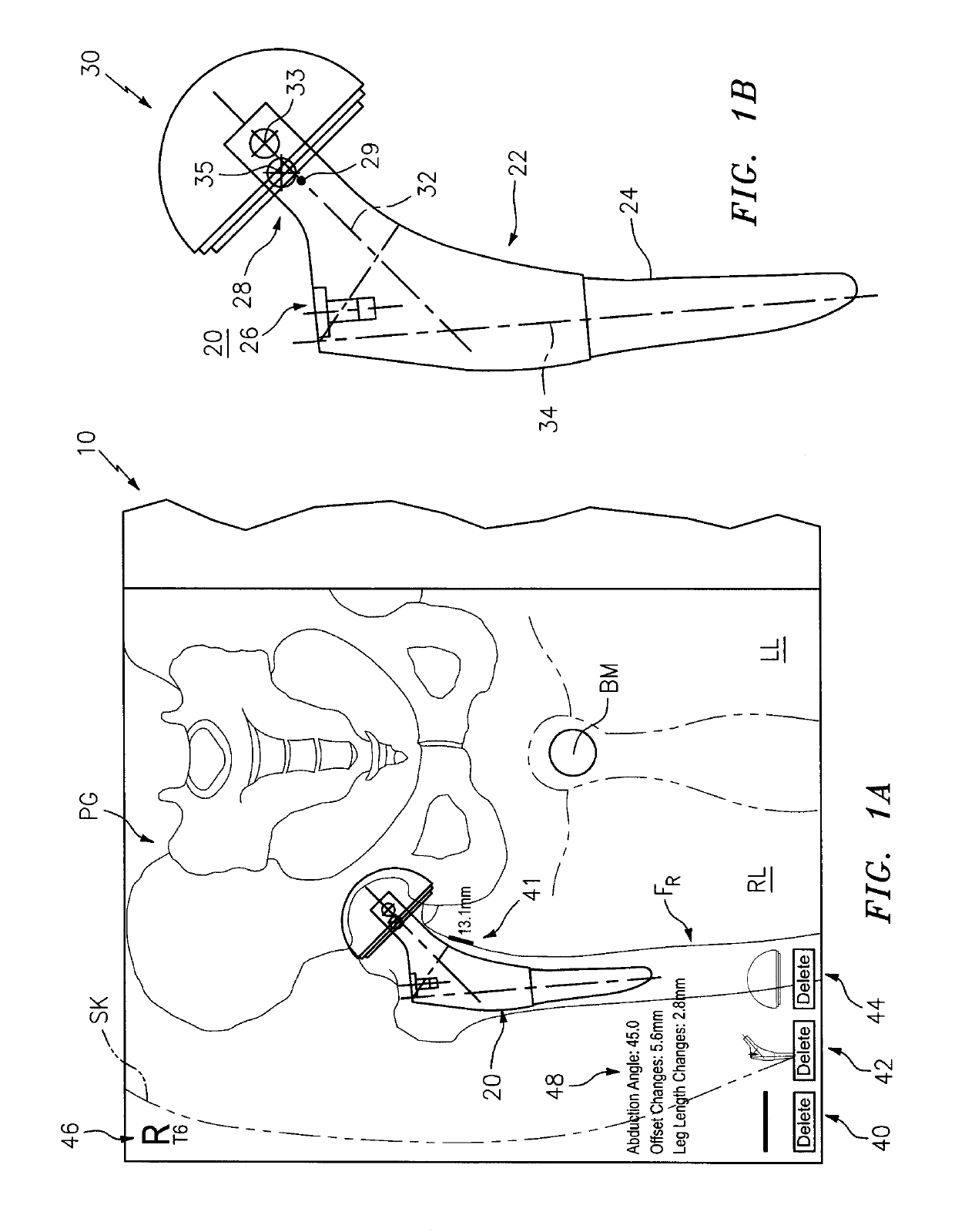Systems and methods for intra-operative image analysis
a system and image technology, applied in the field of image analysis, can solve the problems of/or perform calculations, inconvenient operation, and inability to accurately analyze preoperative scaling techniques, etc., and achieve the effect of accurately and effectively analysing and/or performing calculations
- Summary
- Abstract
- Description
- Claims
- Application Information
AI Technical Summary
Benefits of technology
Problems solved by technology
Method used
Image
Examples
Embodiment Construction
[0114]This invention may be accomplished by a system and method that acquire (i) at least one reference image including one of a preoperative image of a surgical site with skeletal and articulating bones and a contralateral image on an opposite side of the patient from the surgical site, and (ii) at least one intraoperative image of the site after an implant has been affixed to the articulating bone. In certain constructions, the system generates at least one reference stationary point on at least the skeletal bone in the reference image and at least one intraoperative stationary point on at least the skeletal bone in the intraoperative image. The location of the implant is identified in the intraoperative image, preferably including the position of first and second centers of rotation which are co-located in the intraoperative image. At least one of (i) a first digital implant representation is aligned with the skeletal component and with at least the intraoperative stationary poin...
PUM
 Login to View More
Login to View More Abstract
Description
Claims
Application Information
 Login to View More
Login to View More - R&D
- Intellectual Property
- Life Sciences
- Materials
- Tech Scout
- Unparalleled Data Quality
- Higher Quality Content
- 60% Fewer Hallucinations
Browse by: Latest US Patents, China's latest patents, Technical Efficacy Thesaurus, Application Domain, Technology Topic, Popular Technical Reports.
© 2025 PatSnap. All rights reserved.Legal|Privacy policy|Modern Slavery Act Transparency Statement|Sitemap|About US| Contact US: help@patsnap.com



